Hyundai IONIQ 5 vs smart #5 – Performance, range & efficiency compared
Compare performance, boot capacity, efficiency and price at a glance.
Find out which car is the better choice for you – Hyundai IONIQ 5 or smart #5?
Here’s where it gets real: The technical differences in detail
Costs and Efficiency: Looking at overall running costs, both models reveal some interesting differences in everyday economy.
Hyundai IONIQ 5 has a barely noticeable advantage in terms of price – it starts at 38500 £, while the smart #5 costs 39300 £. That’s a price difference of around 857 £.
In terms of energy consumption, the advantage goes to the Hyundai IONIQ 5: with 15.60 kWh per 100 km, it’s to a small extent more efficient than the smart #5 with 18.40 kWh. That’s a difference of about 2.80 kWh.
As for range, the smart #5 performs barely noticeable better – achieving up to 590 km, about 20 km more than the Hyundai IONIQ 5.
Engine and Performance: Power, torque and acceleration are the classic benchmarks for car enthusiasts – and here, some clear differences start to show.
When it comes to engine power, the Hyundai IONIQ 5 has a hardly perceptible edge – offering 650 HP compared to 646 HP. That’s roughly 4 HP more horsepower.
In acceleration from 0 to 100 km/h, the Hyundai IONIQ 5 is minimal quicker – completing the sprint in 3.50 s, while the smart #5 takes 3.80 s. That’s about 0.30 s faster.
In terms of top speed, the Hyundai IONIQ 5 performs somewhat better – reaching 260 km/h, while the smart #5 tops out at 210 km/h. The difference is around 50 km/h.
There’s also a difference in torque: the Hyundai IONIQ 5 pulls slight stronger with 770 Nm compared to 710 Nm. That’s about 60 Nm difference.
Space and Everyday Use: Whether family car or daily driver – which one offers more room, flexibility and comfort?
Both vehicles offer seating for 5 people.
In curb weight, the Hyundai IONIQ 5 is slightly lighter – 1955 kg compared to 2200 kg. The difference is around 245 kg.
In terms of boot space, the smart #5 offers somewhat more room – 630 L compared to 520 L. That’s a difference of about 110 L.
In maximum load capacity, the Hyundai IONIQ 5 performs barely noticeable better – up to 1580 L, which is about 50 L more than the smart #5.
When it comes to payload, Hyundai IONIQ 5 minimal takes the win – 530 kg compared to 502 kg. That’s a difference of about 28 kg.
Our conclusion: The Hyundai IONIQ 5 proves to be offers a more balanced package and thus becomes our DriveDuel Champion!
Overall, Hyundai IONIQ 5 is the better all-rounder in this comparison.
Hyundai IONIQ 5
The Hyundai IONIQ 5 showcases a bold and futuristic design that captures attention with its striking facade and sharp lines. This electric vehicle offers an impressive blend of performance and efficiency, making it a compelling choice for environmentally conscious drivers. Inside, the spacious and tech-forward interior provides a comfortable and engaging driving experience for both driver and passengers.
details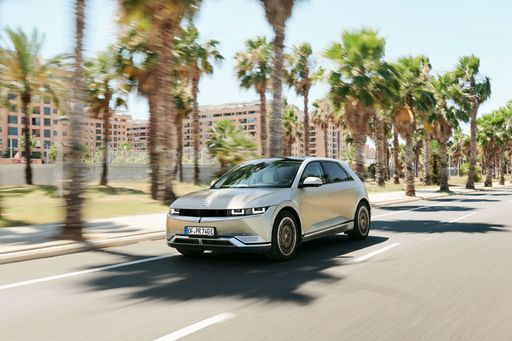 @ hyundai.news
@ hyundai.news
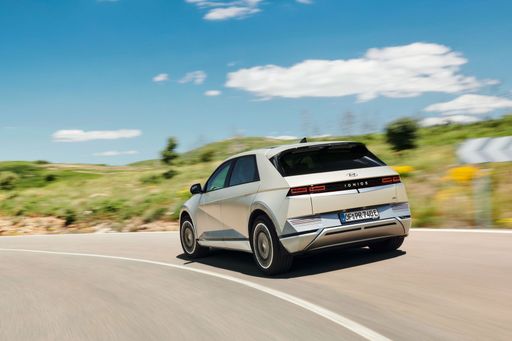 @ hyundai.news
@ hyundai.news
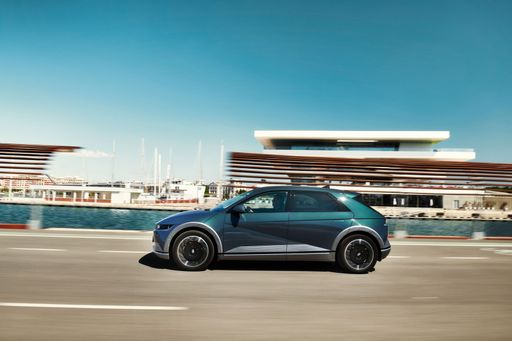 @ hyundai.news
@ hyundai.news
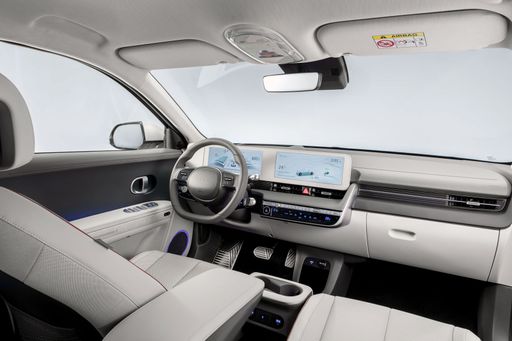 @ hyundai.news
@ hyundai.news
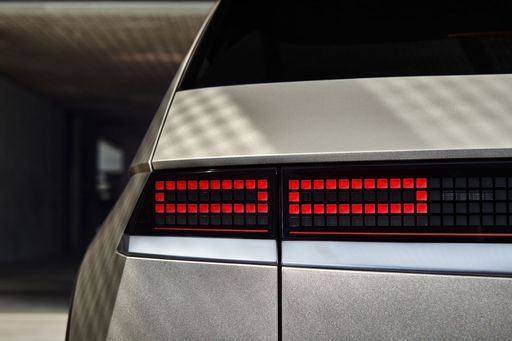 @ hyundai.news
@ hyundai.news
smart #5
The Smart #5 continues to build on the brand's legacy of compact and efficient urban vehicles, now infused with a more modern and stylish design. Its sleek appearance is complemented by a spacious interior, offering comfort without compromising its compact nature. This model is ideal for city dwellers seeking a blend of innovation, practicality, and style in their daily drives.
details

|
|
|
|
|
Costs and Consumption |
|
|---|---|
|
Price
38500 - 64200 £
|
Price
39300 - 52200 £
|
|
Consumption L/100km
-
|
Consumption L/100km
-
|
|
Consumption kWh/100km
15.6 - 21.2 kWh
|
Consumption kWh/100km
18.4 - 19.9 kWh
|
|
Electric Range
440 - 570 km
|
Electric Range
465 - 590 km
|
|
Battery Capacity
63 - 84 kWh
|
Battery Capacity
74.4 - 94 kWh
|
|
co2
0 g/km
|
co2
0 g/km
|
|
Fuel tank capacity
-
|
Fuel tank capacity
-
|
Dimensions and Body |
|
|---|---|
|
Body Type
SUV
|
Body Type
SUV
|
|
Seats
5
|
Seats
5
|
|
Doors
5
|
Doors
5
|
|
Curb weight
1955 - 2275 kg
|
Curb weight
2200 - 2378 kg
|
|
Trunk capacity
480 - 520 L
|
Trunk capacity
630 L
|
|
Length
4655 - 4715 mm
|
Length
4695 mm
|
|
Width
1890 - 1940 mm
|
Width
1920 mm
|
|
Height
1585 - 1605 mm
|
Height
1705 mm
|
|
Max trunk capacity
1540 - 1580 L
|
Max trunk capacity
1530 L
|
|
Payload
385 - 530 kg
|
Payload
475 - 502 kg
|
Engine and Performance |
|
|---|---|
|
Engine Type
Electric
|
Engine Type
Electric
|
|
Transmission
Automatic
|
Transmission
Automatic
|
|
Transmission Detail
Reduction Gearbox
|
Transmission Detail
Reduction Gearbox
|
|
Drive Type
Rear-Wheel Drive, All-Wheel Drive
|
Drive Type
Rear-Wheel Drive, All-Wheel Drive
|
|
Power HP
170 - 650 HP
|
Power HP
340 - 646 HP
|
|
Acceleration 0-100km/h
3.5 - 8.5 s
|
Acceleration 0-100km/h
3.8 - 6.9 s
|
|
Max Speed
185 - 260 km/h
|
Max Speed
200 - 210 km/h
|
|
Torque
350 - 770 Nm
|
Torque
373 - 710 Nm
|
|
Number of Cylinders
-
|
Number of Cylinders
-
|
|
Power kW
125 - 478 kW
|
Power kW
250 - 475 kW
|
|
Engine capacity
-
|
Engine capacity
-
|
General |
|
|---|---|
|
Model Year
2024
|
Model Year
2025
|
|
CO2 Efficiency Class
A
|
CO2 Efficiency Class
A
|
|
Brand
Hyundai
|
Brand
smart
|
What drive types are available for the Hyundai IONIQ 5?
The Hyundai IONIQ 5 is available as Rear-Wheel Drive or All-Wheel Drive.
The prices and data displayed are estimates based on German list prices and may vary by country. This information is not legally binding.
